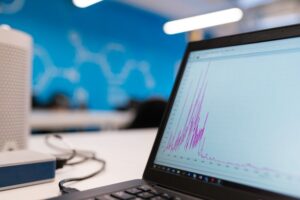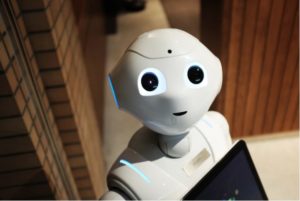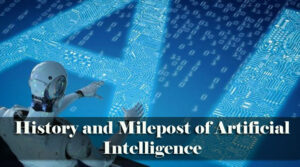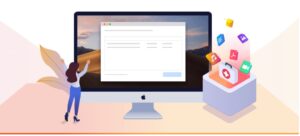“Artificial intelligence and machine learning gained momentum during the COVID crisis as millions of workers worldwide were mandated to work from home.”
AI-driven tools highly likely will continue to be in demand in the post-COVID world.
Screening and Assessment Tools
Human resource departments were particularly impacted by work-from-home mandates. Some of the challenges human resources face include the need for employee information to remain secure yet accessible from multiple locations. Recruiters must maintain confidentiality. New hires must fill out sensitive forms. Interviews must occur on secure platforms.
Enter chatbots. You have probably interacted with a chatbot in an online retail environment, but new advances in AI have proven useful in non-retail environments. With the use of bubble choices, potential applicants can self-screen before moving on to the next steps of the hiring process. This saves remote applicants time. It also helps human resources staff weed out applications that fail to meet essential criteria.
All of this information exchange and skill assessment occurs within your organization’s platform. This allows for end-to-end security and data sharing.
Aside from user-friendly chatbot designs that save time for all parties, there are also advances in assessment processes. AI improves the assessment process by adapting to applicant answers and adjusting levels of difficulty in real-time. Think of it like the second level of the application process.
Applicants also have the opportunity to end their application if the skills are above their comfort level. Recruiters have the opportunity to assess candidates in real-world circumstances. All of this reduces the amount of time it takes to interview a large candidate pool.
Some organizations use chatbot conversational assessments in a hyper-efficient manner. The Singapore government uses an Adaface assessment chatbot when hiring engineers. The candidate enters into a conversational assessment as soon as they click the apply button on the government’s website. They are then prompted via dialogue to answer technical questions. Their programming and debugging skills are checked and assessed. The top 30% of candidates are automatically slotted for an interview time and the hiring team receives an email.
A machine learning-based simulation RQRY.ai helps improve hiring decisions. Analyzing vacancy requirements and applicants’ test results, the system finds a perfect match for applicant/vacancy.
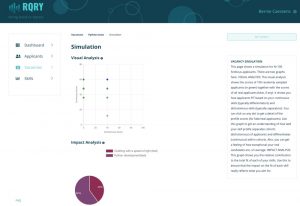
Source https://resolved.be/solutions-rqry
Training Tools
Employees are continuously adapting to the pandemic. Workers in some industries are losing their jobs, while other industries are actively growing and in need of new talent. It is beneficial to understand this shifting landscape and reach out to individuals with transferable skill sets.
Not all new hires will be equipped with the exact skill set your organization might require. Due to the pandemic, many training courses are available at competitive rates. All members of your organization or business can take courses to refresh their skills and grow your business. AI virtual coaches can identify employee skills gaps and suggest the best ways to close them.
Recruiter Apps
Perhaps the most commonly known recruiter app is LinkedIn Recruiter. For years, LinkedIn has acquired volumes of data from its users. Over time, the company has built extensive data sets across industries, skill sets, and global regions.
“AI algorithms and machine learning programs have leveraged this data to create a highly efficient tool. The app uses simple metrics in sophisticated configurations to provide accurate results.”
As the data pool increases, the AI’s search and recommendation algorithms continue to evolve. The tool provides recruiters and applicants with recommendations based on their searches over time. As a result, recruiters develop optimized talent pools that they can readily tap when needed.
Risks or Disadvantages of AI in HR
From a leadership perspective, AI in HR seems like a wise and timely investment. However, HR employees may fear losing their jobs, this is one of 5 potential AI threats to humanity. Candidates might find AI interactions lacking in personality. Long-time employees may be resistant to change. Each of these risks can be overcome.
Leaders and HR management can assess how current workers manage their time. AI will free up HR staff for complex tasks and leave rudimentary tasks to machine learning algorithms. In addition, HR representatives can personally follow up with candidates and further refine the interview process. AI is a starting point toward greater efficiency. It is not a replacement for human beings.
Post-Pandemic Outlook
For many industries, work-from-home mandates were crippling. Industries like manufacturing, healthcare, and journalism had to upend many established practices. These industries require physical touch, personal connection, and manipulation of objects. Virtual reality innovations in the workplace have solved many of these problems. Patients with acute and chronic pain have found relief in VR simulations. Maintenance supervisors and leads can employ VR to teach on-site workers and check infrastructure. Journalists are learning to engage in immersive VR platforms.
Workforce analytics will be used to measure and monitor workforce performance and productivity. A focus on post-pandemic wellness will lead to increased space between desks, air filters, daily health checks, and improved work-from-home options. Technology will continue to support healthy quality of life changes post-pandemic.
—- Serhii Maksymenko, Data Science Solution Architect at MobiDev, AI software development company.




